Humans Can Find Meaning in Ape Gestures
Bonobos and other great apes can’t make the range of vocalizations emitted by humans, and they lack a spoken language. So how do apes communicate? They use gestures.
Specific signals made with their hands or other body parts mean very specific things. Scientists have identified around 70 such signals in bonobo communities, and a similar number in chimpanzees. Gorilla and orangutan gestures, currently under study, are likely to prove similarly plentiful.

Decoding Signals
Over the years, researchers have decoded many of the signals that make up bonobo and chimp communication sytems. That led to a related question: how well can folks who aren’t ape scientists guess the meaning of great-ape gestures? A recent study indicates the answer is: much better than one might expect.
The study, published in January 2023 in the journal PLOS Biology, was conducted by two primatologists at the University of St. Andrews in Scotland, Kirsty Graham and Catherine Hobaiter. It developed out of earlier work done by both scientists.
Graham had spent more than 1,000 hours observing bonobos near Wamba in the Democratic Republic of Congo in 2014 and 2015, while Hobaiter had conducted similar research in Uganda with chimpanzees. Both scientists had sought not just to catalog what gestures the animals were using. They also wanted to examine how well those gestures were understood by others within their communities.
Digging Deeper
To answer that question, the scientists videotaped thousands of interactions among groups of both bonobos and chimpanzees, then painstakingly analyzed what was going on in those interactions. If an animal changed its behavior in response to a gesture, and the change satisfied the gesture-maker (evidenced by its no longer making the gesture), the researchers concluded the ape’s communication was understood by its target.
Graham’s work had convinced her that the gestures directed by bonobos at their peers constitute “an intentional, flexible, mutually understood communication system,” essentially the same thing Hobaiter had concluded about chimpanzees.
When the two scientists compared their work, they found that around 90% of the gestures used by bonobos and chimps overlap. Those communication systems aren’t as sophisticated as human language, but they’re far more language-like than the signals used by most other animals. While tackling the question of how well bonobos and chimpanzees understand the gestures directed at them by their peers, Graham and Hobaiter were struck by how easily they, too, understood the gestures. Watching the same action provoke the same response over and over in the videotapes may have confirmed the gesture’s meaning. But the researchers felt they often had correctly understood even new signals, almost immediately.
Both had spent a huge amount of time observing great apes. Did that explain why the great-ape gestures so often seemed instantly comprehensible? Or might we all retain some understanding of apes’ gestural proto-language, perhaps due to our shared evolutionary history?
When in Doubt, Test It Out!
To answer that question, Graham and Hobaiter devised an online quiz for lay people. Subjects who took the quiz would view 20 short video clips of bonobos and chimps making 10 of the most frequently used ape gestures. They would then choose among four possible meanings for each gesture. For example, one chimp gently pushes another backwards. Does this mean, “Stop doing that,” “Follow me,” “Climb on my back,” or “Move into a new position”? Someone ignorant of ape behavior should guess the right answer only 25% of the time (one out of four).
Although the researchers initially expected the number of quiz-takers to be small, a fortuitous mention of the study by BBC Radio 4 resulted in 5,656 people completing the quiz. These respondents correctly interpreted the apes’ messages 52 percent of the time – more often than random chance would have dictated.
Some of the quiz-takers had seen a brief, one-line description of the gestures’ context, but this had only a small effect on their success, boosting the accuracy rate to about 57%. Quiz-takers even did a good job of identifying the meaning of several gestures with more than one possible meaning. The only example that stumped them was a gesture known as Object Shake (in which the animal shakes an object such as a branch.) This can mean “Let’s have sex,” “Groom me,” or “Move away.” Participants’ success rate on that one was no better than chance.




Humans Can Understand Ape Communication
The crowd-sourced study doesn’t answer the question of why humans can understand the great-ape gestural vocabulary as well as we do. Is it because human language evolved from some elaborate system of early hominid hand signals? Researchers have found that almost 90% of the gestures used by human toddlers are the same as those used by chimpanzees. But no one can say what percentage of adult humans still routinely use great-ape gestures to communicate. It’s dauntingly difficult to pick them out from the vast array of gestures with which we complement our spoken language.
Although Graham and Hobaiter are no longer collecting data for their gesture study, anyone can take a version of the quiz online.
Graham, Hobaiter, and their colleagues are in the process of building an online “great-ape dictionary.” It currently includes only gestures commonly made by bonobos and chimpanzees, but Graham says material from gorilla and orangutan communities will be added soon – along with information about the meaning of all the gestures documented. As the dictionary grows, it seems certain to amplify human understanding of our closest animal relatives.
SUBSCRIBE FOR BONOBO VIDEO SERIES
Jeannette De Wyze was a journalist at the San Diego Reader for 30 years. Today she’s a bonobo lover and supporter and the volunteer liaison between Women’s Empowerment International and the Nyaka Grannies Project in Uganda. She also raises service dogs for Canine Companions for Independence and is an active travel blogger.
Sources:
- Graham KE, Hobaiter C (2023). Toward a great ape dictionary: Inexperienced humans understand common nonhuman ape gestures. PLoS Biol 21(1): e3001939. https//doi.org/10.1371/journal.pbio.3001939
- Graham KE, Furuichi T, Byrne RW (2017). The gestural repertoire of the wild bonobo (Pan paniscus): a mutually understood communication system. Anim Cogn 20; 171-177. https//doi.org/10.1007/s10071-016-1035-9
- Hobaiter C, Byrne RW (2011). The gestural repertoire of the wild chimpanzee. Anim Cogn 14:745-767. doi:10.1007/s10071-011-0409-2



